Particular vigilance should be exercised by owners of cat breeds such as Maine Coon, British and Sphynx. They often have a genetic predisposition to heart disease, which can lead to pulmonary edema and provoke the situation when the cat breathes heavily at the mouth.
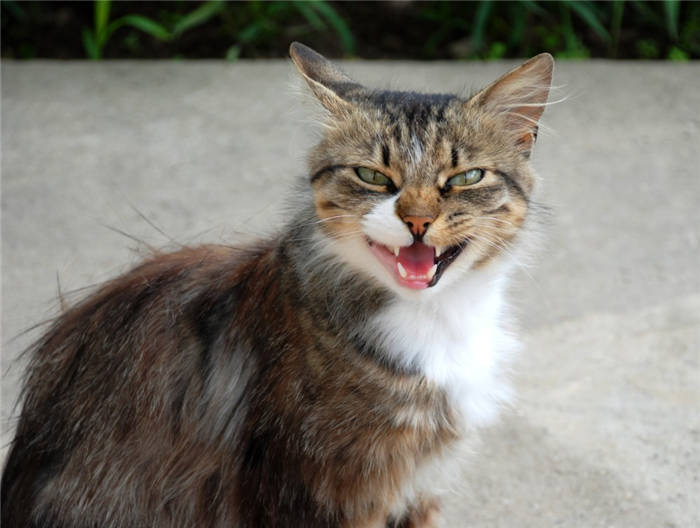
- Why does a cat often breathe through its abdomen?
- Abnormalities associated with breathing disorders
- Problems with breathing in cats
- Cat breathing with its mouth open
- Kitten breathing after playing, sticking her tongue out
- Why a cat breathes with its mouth open
- Simple physiology: when mouth breathing in a cat is the norm
- Abnormalities: when a cat's mouth breathing is a sign of illness
- Severe stress, stress, or. heat
- Asthma
- Factors triggering open-mouth breathing in cats
- Physiological factors
- Pathological factors
- Associated Symptoms
- Dyspnea is caused physiologically
- Pathological dyspnea
Why does a cat often breathe through its abdomen?
In a normal state, cats, like people, breathe easily and at ease. Noticing this process from the side is quite difficult. But sometimes you can clearly see that the cat is breathing abdominally frequently. His sides are puffed up, and his mouth is often ajar. This condition can not be called the norm, although the causes are not always related to the disease.
The process of breathing the cat is not fundamentally different from other mammals, including humans. When an animal breathes, air is drawn in through the nose, enters the larynx, and from it through the trachea is sent to the lungs. Then the oxygen is picked up by the blood and distributed to all organs of the body. The "waste" goes back out the same way:
When the cat is calm, it breathes about 30 times per minute, that is, every two seconds. The number of breaths from 20 to 40 is considered normal. In kittens, this figure is slightly different and can reach 50 times.
Rapid breathing in adult cats is observed when they are afraid of something, agitated, angry. For example, during rides in transportation, meeting with a dog or during active games. You may also notice that the pet is breathing frequently and its abdomen is heaving, if the kitty is very hot.
Another reason for the abnormality is the prenatal state of the female or heat. All of these situations can be considered a variant of the norm. After a short time, the cat calms down and breathes normally again. However, sometimes we are talking about abnormalities.
Abnormalities associated with breathing disorders
If a cat is breathing on its sides and belly, it means that it is not getting enough oxygen. For some reason there is not enough air in the lungs, the body begins to "panic" and tries to make up the deficit. The animal breathes deeply and often. It tries to take in more air.
In medicine, this phenomenon is called abdominal breathing. It can be one of the symptoms of various diseases. The most common are.
- Damage to the mucosa of the mouth. If sores, fistulas, etc. have formed in the cat's mouth, it may be simply painful for the animal to breathe. It is no longer natural. It brings discomfort, and the body tries as if "to fill up," swallowing more air at once. However, this does not help. Breathing becomes disrupted; on the contrary, its frequency increases.
- Infectious and inflammatory diseases of the respiratory system. It can be rhinitis, tracheitis, bronchitis, pneumonia or a common cold, which is common not only in humans but also in cats. Fighting the infection, the immune system secretes mucus with a large number of white blood cells. This is completely normal, but the airways become clogged, and it is difficult to get air to the lungs. Experiencing its lack, the cat breathes deeply and frequently with its abdomen. Associated symptoms with diseases of infectious and inflammatory nature are cough, nasal discharge, bad breath, increased body temperature.
- Laryngitis, bronchial asthma, allergies. With them, shallow breathing is very often observed. It is accompanied by a dry cough. If an advanced form of asthma occurs, the cat may suffocate.
- Tumors and hernias in the airway. Any neoplasms in the larynx, trachea, or lungs are serious obstructions to air. Naturally, the cat feels the lack of it, breathes heavily and frequently, the abdomen is heaving. If the situation lasts for more than a day, two days or even a week, chronic hypoxia develops. The body, constantly lacking oxygen, weakens, systems malfunction, additional diseases are triggered. A cat suffering from cancer or having a hernia is easy to distinguish from a healthy animal. Not only does she breathe heavily with her abdomen, but she is also apathetic, eating poorly, with a lack of body weight in her face.
- Rib fractures.. In such injuries, the lungs are pinched by splinters and cannot function properly. Therefore, the cat breathes frequently and its abdomen is shifting. An inadequate reaction of the cat to touching, which can be explained by pain, allows suspicion of a fracture. The cat may assume unnatural positions, sleep on one side only all the time etc.
- Cardiovascular disease. Also one of quite frequent causes. Especially in certain breeds of cats (British, Maine Coon), which have a genetic predisposition to heart abnormalities. In addition to the fact that the cat's abdominal breathing is frequent and deep in such dysfunctions, there are other symptoms. Among them are wheezing in the chest, blueness of the mucous membrane of the mouth, pallor of the skin, and lethargy of the animal. During a severe attack, breathing may stop, and then the cat needs emergency care.
- Foreign body in the airway. Situations where a cat has choked on a bone or a solid piece of food are very common. In most cases, the animal manages to cough and push the foreign object out. However, sometimes it penetrates deep enough and blocks the air. This causes the cat to breathe deeply and often. She also needs human help in this case.
Problems with breathing in cats
The respiratory system consists of many parts, including the nose, throat (pharynx and larynx), airways, and lungs. Air enters through the nose and then is carried to the lungs through a process called breathing. In the lungs, oxygen from the alveolar air passes into the blood. Erythrocytes, in turn, carry oxygen to other organs in the body. This is all part of the physiological process of a healthy body.
While oxygen is transferred to the red blood cells, carbon dioxide is carried from the red blood cells to the lungs and exits through the respiratory tract on exhalation. This cyclical movement of breathing is controlled by the respiratory center of the brain and nerves in the chest. Diseases that affect the respiratory system or the respiratory center in the brain can cause breathing difficulties in cats. Problematic or difficult breathing is called shortness of breath, and excessively rapid breathing is called tachypnea (polypnea).
Respiratory problems can affect cats of any breed or age, and the condition can quickly become life-threatening. If your pet is experiencing breathing problems, you should call a veterinarian at home or visit a clinic as soon as possible for a veterinarian to examine him or her.
SYMPTOMS AND TYPES
- Abdomen and chest move when breathing
- Enlarged nostrils when breathing
- Breathing with mouth open
- Unnatural posture (paws wide apart)
- Neck and head held low, in front of body (extended)
- Problem may occur when inhaling
- Problem may occur when exhaling
- Noisy breathing (stridor)
Other symptoms, depending on the cause of the breathing problem
Small airway disease in the lungs (bronchi and bronchioles)
Diseases in the chest area surrounding the lungs (pleural space)
- Low oxygen levels in the blood (hypoxemia)
- Low red blood cell count (anemia)
- Choking
- Fluid in the lungs due to heart failure (pulmonary edema)
- Fluid in the chest space surrounding the lungs (pleural effusion)
- Bleeding in the lungs
- Tumors
Cat breathing with its mouth open
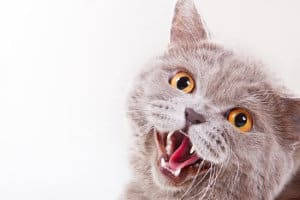
Contrary to dogs, in which rapid breathing with the tongue out is normally used to increase the area of moisture evaporation and regulate the body temperature (after vigorous exercise or in hot weather), cats do not have this cooling mechanism. If a cat breathes with its mouth open it signals about its serious condition, often requiring emergency veterinary care.
Contents
Causes of labored breathing in cats
Most often this symptom is associated with severe oxygen deprivation – hypoxia, when for various reasons oxygen from inhaled air is not delivered in sufficient quantities to the organs and tissues of the body.
If along with this breathing the cat's abdominal muscles move actively (as if it tries to inhale air with its abdomen and expel it on exhalation), this is called abdominal breathing and indicates that the lungs and pectoral muscles are not coping with the respiratory function. Normally, there should be a vacuum around the lungs in the chest cavity that allows the lungs to fully expand on the inhalation. Due to trauma and a number of other pathologies, air can get into the chest cavity (this condition is called pneumothorax) or various kinds of body fluids (hydrothorax): blood, inflammatory or non-inflammatory effusion. Because of this, the lungs can not normally expand and get enough air to breathe, the cat tries to breathe through its mouth.
The animal can only be helped at a veterinary clinic, and you must go there urgently. The doctor will first drain the contents of the chest cavity and determine its nature, and the animal will be placed in an oxygen box for several hours. Further treatment (and if necessary a more detailed diagnosis) will depend on what exactly filled the chest cavity and what pathological causes might have caused this condition. The vet will tell you about this after giving first aid to your cat. But in any case the cat will be shown treatment in hospital for at least one day (or possibly several days) to minimize the risk of recurrence of the pathological condition.
Kitten breathing after playing, sticking her tongue out
After a very active game (jumping for the ball on the wall (carpet) to the ceiling, somersaults, back on the wall, on the floor, on the carpet, somersault, etc. for about 7 minutes, and even longer) my kitty (10 months) is breathing with her tongue stuck out, you can hear her breathing. Do you think this is normal? Or should this not happen?
When she was little (3 months), she breathed the same way when running long and uninterruptedly from bed to the floor in a circle behind a rope (that is also running with obstacles).
By the way, when just running a lot, this does not happen. So I thought, maybe it's just fatigue. Or maybe the dust from the carpet.
And if you run so, how will you breathe? Cats are also "exhausted" from running and jumping, especially if someone is playing with it. They run around all they want, but here they have to catch a string or a ball, so they can run until they fall over. My cat's like that. Sometimes I catch up with her, she lies down and breathes like a dog with her tongue out. But she runs around on her own, nothing.
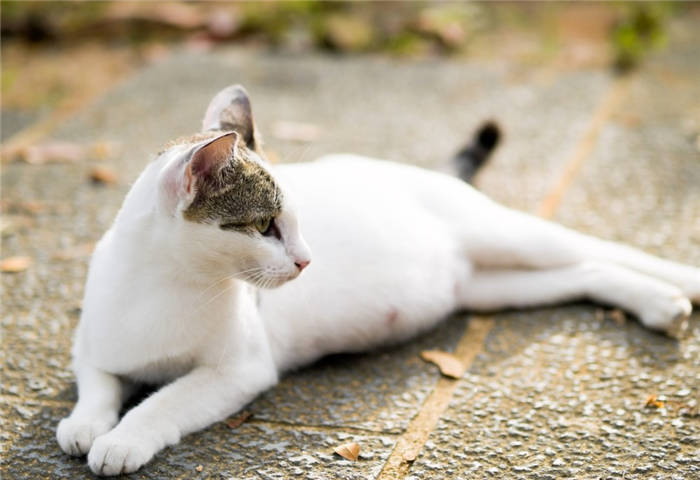
Thank you, well, I'll stop worrying about it. Our first cat has just never run so sIilno running, so I am surprised, looking at Filyushka.
Our kitty, too, when she runs, breathes with her tongue out (because of this nicknamed her kotopesos). She's been doing that since the beginning, like us, since she was 2 months old. now she's 8. it bothers me too. But called her mom's owner, he said that all their kittens breathe like that)). So it's probably okay.
I don't agree that it is normal, though.
Heavy loud breathing with tongue out very often indicates a heart problem. That is, it is a trivial shortness of breath.
My cat, for example, every day rushes like clockwork for at least 15 minutes (does somersaults no worse) and several times. And for six months, that lives with me so breathed only 2 times, when such a run was more than 40-minute, paws no longer went, and still wanted to play.
Why a cat breathes with its mouth open
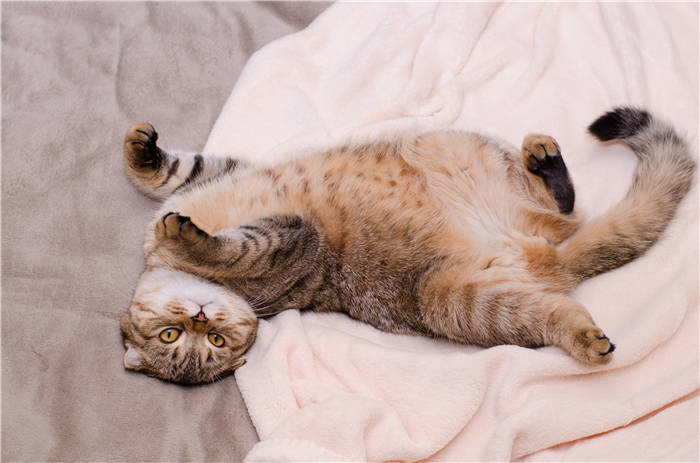
Animals, like humans, are characterized by breathing with their mouths open. In this article, we will try to look at the most common reasons that cause cats to use this type of getting oxygen for their bodies.
The reasons why cats breathe with their mouths open can be divided into physiological and pathological.
Physiological reasons include those in which animals are forced to resort to this type of breathing without having pathological changes in their body. This necessity may arise during increasing of the ambient temperature, especially in longhaired cats, owing to a very heavy load, is more characteristic of obese animals, and passes quickly on exclusion of the factor influencing the organism, i.e. has an adaptive character for satisfaction of the growing oxygen requirements of the organism.
Causes of pathological genesis is much more extensive. The work of the mammalian respiratory system is aimed at oxygenation of the body and removal of carbon dioxide from the venous blood. The upper airways, the lungs (the organ of gas exchange) and the respiratory muscles (the pump that ventilates the lungs) are used for this purpose. Any disruption or abnormality in one or more of these components can lead to respiratory failure, which will clinically manifest as changes in the animal's breathing. These conditions are varied, but in the end all result in an acute respiratory disturbance that is directly life-threatening.
The main causes of acute respiratory failure (ARF) in cats can be divided into two groups. These are the ventilatory form and the pulmonary form.
The ventilatory form includes:
1. Disruption of central respiratory regulation:
– Arterial hypotension;
– Pathological processes in the central nervous system (meningoencephalitis, intracranial neoplasms);
– Craniocerebral injuries;
– Poisoning or overdose of drugs – respiratory center depressants.
Simple physiology: when mouth breathing in a cat is the norm
- When the animal has been played with. Has the cat been running around actively and a lot and then stopped with its mouth ajar? It's okay!
- When the animal has made a march around the apartment. Again, a playful pet just needs to "catch its breath."
- When the cat is hot. Sometimes it's hot in the house, and this is how the cat regulates heat exchange.
- When the cat is frightened or stressed.
- When the cat is giving birth.
Usually at such times, the cat breathes through its mouth for a short time – breathing quickly returns to normal. The exceptions are overheating and childbirth.
If you noticed that the cat was not playing or running around, the house is cool, no stress has happened to the pet, and it is definitely not giving birth, but it breathes with its mouth, then you should be concerned.
Abnormalities: when a cat's mouth breathing is a sign of illness
- Something's wrong with the lungs.
- Something has happened to the nasopharynx.
- Something happened to the cardiovascular system.
- The cat is in a lot of pain because of an injury.
- The cat has an allergic reaction, mouth breathing is a sign of Quincke's edema.
- The cat has been poisoned.
The most attentive cats are Maine Coons, British and Sphinxes, overweight and underweight cats, and animals with chronic diseases. In these, sudden and unexplained mouth breathing is a reason to go to the vet immediately.
There is no first veterinary care in the case of shortness of breath because it is only a symptom. All you can do is call the vet at home or drive to the clinic. Don't try to give him artificial respiration, don't give him human drugs, don't shake him by the scruff of the neck, and don't try to force-feed him water. Perhaps after examining and diagnosing the animal the doctor will tell you how to stop the seizures.
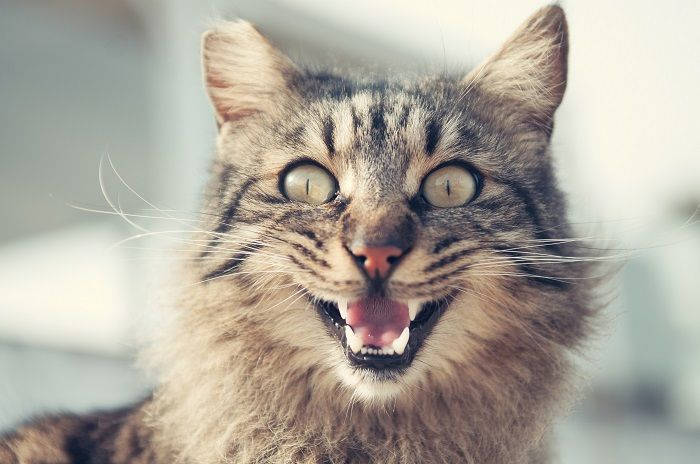
Gemon
Dry food
Severe stress, stress, or. heat
When we are in a hurry and running somewhere, we often can't catch our breath for some time afterwards. It's the same with cats – after a frantic chase for a teddy mouse, your cat may just. run out of breath. You will notice that she breathes with her rum open more often than usual – so her body gives off heat more efficiently and returns to its normal temperature. If it happens during playtime and goes away after a while, you have nothing to worry about.
There are cats that breathe through their mouths when they are very stressed or frightened. This can happen, for example, when transporting a cat in a car. The cat may breathe through its mouth and drool. In this situation you should (if possible) eliminate the source of stress as quickly as possible and wait quietly until the cat calms down. A cat prone to stress in a car should be sedated before a trip – consult your veterinarian.
Cats also breathe through their mouths when they are too hot – you should help them cool down in this situation. Put the cat in a cool, ventilated room, or offer it a damp towel on the floor so it can cool down faster.
Warning: If your cat has trouble breathing, seems restless or, conversely, falls into apathy during a heat wave, take him to the vet as soon as possible. Such symptoms may indicate a stroke.
Asthma
It's an inflammatory disease of the lower respiratory tract that affects more than just humans – cats also suffer from it. Asthma has an allergic origin and is associated in particular with constriction of the airways. One of the main symptoms is wheezing – breathing through the mouth. The disease usually develops between 2 and 8 years of age. If a cat breathes through its mouth for an extended period of time, you should take it to the vet!
Otherwise known as pleural effusion, a pathological condition in which large amounts of fluid accumulate around the lungs. The lungs are compressed so that they cannot function properly. As a result, breathing problems occur. In addition to an open mouth and wheezing, other symptoms of pleural effusion include weakness, decreased or no appetite, and bluish skin. This is a dangerous condition that accompanies many illnesses – if you suspect it may be present in your cat, take her to the vet as soon as possible!
Factors triggering open-mouth breathing in cats
All causes of a cat breathing with its mouth open are divided into physiological and pathological. Each group has its own characteristics.
Physiological factors
Causes called physiological are not related to any disease of the cat. They include:
- The cat breathes through its mouth because of the high air temperature (especially affects cats of long-haired breeds);
- the animal breathes abnormally after significant physical exertion (fast running, active games);
- severe stress experienced by the cat may lead to breathing problems;
- the female cat breathes through her mouth during or immediately after giving birth.
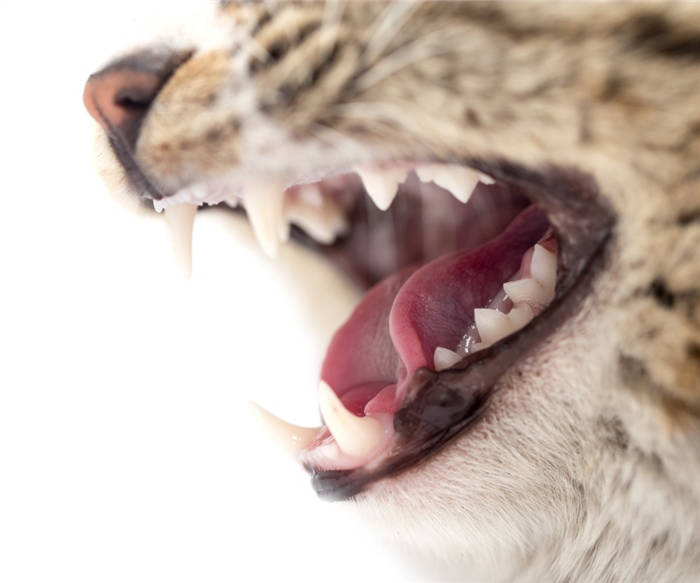
If one of these occurs, the cat will breathe normally again soon after it has been removed. In such cases, it is possible not to worry, and just to observe the pet. However, physiology is much more often not involved.
Pathological factors
There are many diseases in which the cat breathes by mouth. Among them:
- Pathologies of the oral cavity (this can be various injuries, dental problems, ulcers on the mucosa, fistulas, cleft upper palate, etc.)
- ingestion of a foreign body into the respiratory tract;
- Infestation by parasites that enter the lungs and interfere with breathing;
- Cardiovascular diseases (myocarditis, malformations, tumors in the heart);
- Respiratory dysfunctions (tracheitis, bronchitis, pneumonia, swelling or tumor in the lungs, laryngeal edema, pulmonary thromboembolism);
- rib fractures, which squeeze the lungs and make it impossible for the animal to breathe normally;
- craniocerebral injuries that affect the respiratory center;
- Damage to the spinal cord or abnormalities developing in the spinal cord;
- Severe dilatation of the stomach;
- rupture of the diaphragm;
- myopathy;
- poisoning;
- allergies.
Associated Symptoms
If the pet is healthy and breathes through her mouth after play, stress, or during a heat wave, there will be no other alarming symptoms. Enlarged pupils, disheveled hair, a fluffy tail, and a protruding tongue do not count. This only confirms that the cat is agitated, tired, etc. Soon she will be breathing normally again.
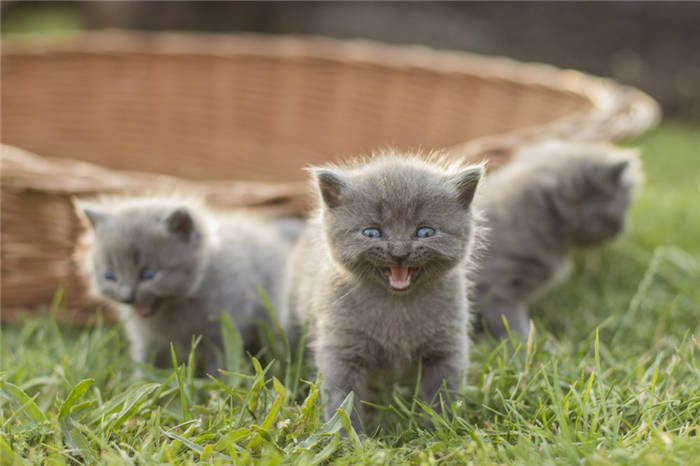
In those cases where pathology is involved, there are usually accompanying symptoms. For example, cardiovascular disease as well as respiratory dysfunction usually begins:
The owner may notice that the pet refuses to play as usual and lies down more and more. The mucous membrane of the mouth often takes on a bluish hue, indicating hypoxia. You can hear rales in the chest. Tachycardia can be observed. If the cat is breathing heavily with its mouth open, do not hesitate. Most likely the cat is seriously ill and may go into a coma, which can be fatal.
If you notice that the animal is not breathing normally, you should look at its mouth. This may be the cause. Any sores, redness, rashes, swellings on the mucosa should not go unnoticed.
If the cat began to hold its mouth open, breathing frequently, with the presence of vomiting, perhaps we are talking about poisoning or other problems with the gastrointestinal tract. When the abnormality is accompanied by coughing, infectious respiratory lesions or other pathological processes in them should be suspected. The cat may breathe with its mouth open and cough in allergies.
Before you start treatment, you need to go to the doctor urgently. You should not put off going to the doctor or give up on breathing problems, you should analyze the situation carefully. Whether it could have been triggered by active play, what the temperature of the room where the animal is, whether there are accompanying symptoms and what kind of symptoms. All of these play a huge role when the animal is breathing through its mouth.
Dyspnea is caused physiologically
The physiological type of dyspnea in cats develops as a result of natural life processes and there is no need for specialized treatment to eliminate it. Dyspnea, which occurs under stress factors or unfavorable conditions, disappears on its own, and the cat's breathing returns to normal.
The main causes of the development of physiological shortness of breath in domestic cats are:
- Stresses and psycho-emotional stress. Shortness of breath develops against the background of the secretion of an excessive amount of the hormone – adrenaline, into the systemic bloodstream. This hormone provokes increased work of the myocardium. Against this background, the need for oxygen increases sharply and to make up for the lack of oxygen, the animal breathes intensely and frequently, opening its mouth.
- Stresses of the body of the physical type. During active games, fast running and jumping, the heart muscle contracts faster, and the necessary oxygen is wasted faster. To make up the deficit, the animal starts breathing more often than when it is at rest. A similar response is seen when the body overheats.
- Damage to the thorax. If the animal breaks its ribs as a result of mechanical trauma, it experiences pain, in turn provoking a state of stress. The cat against the background of pain begins to breathe frequently and shallowly, opening its mouth. In such cases you should not hesitate and it is important to go to the veterinary clinic for professional help.
Physiologically determined shortness of breath has a number of characteristic signs. Each owner should know what symptoms are characteristic of physiological dyspnea in order to distinguish it from pathological dyspnea. Thus, the signs of physiological dyspnea are:
- Polydipsia ( increased thirst) – the cat drinks a lot of water after vigorous exercise, jumping and running, after playing, and breathing heavily;
- Restlessness – The cat may show obvious signs of anxiety, its pupils are dilated and its breathing is labored (an obvious sign of stress, the cat may have been running away from an angry enemy);
- Lethargy and apathylethargy – if overheated in direct sunlight, the cat tries to find a cool place and seems lethargic, breathes quite often and shallowly.
Pathological dyspnea
Pathological type of dyspnea in cats is not an independent disease. It is only one of the obvious signs of disorders in one of the body systems. The reason for going to the veterinarian is the occurrence of breathing problems in the cat on a permanent basis and not related to physiological factors (constant activity, hot weather, pregnancy).
In the conditions of the veterinary clinic all the necessary diagnostic measures will be carried out for the animal, allowing to establish the true cause of shortness of breath. As a rule, the pathological type of dyspnea develops with disorders of the respiratory tract.
When the upper part of the respiratory tract is affected (inflammation of the maxillary sinuses, rhinitis), a large amount of mucus is released, clogging the airways. In some cases, polyps, foreign bodies lodged in the upper part of the respiratory tract cause shortness of breath.
- З Lower respiratory tract illnesses. Various complications of inflammatory processes in pulmonary structures in which purulent exudate accumulates in the alveolar space. This provokes severe poisoning of the whole body, against which there is dyspnea with increased body temperature indexes.
- Another cause of dyspnea in the lower respiratory tract isasthma . Bronchial asthma is a separate type of lung pathology, accompanied by severe attacks of dyspnea.
- Myocardial and vascular disease . . Dyspnea provokes and hypertrophic form of cardiomyopathy of cats. The pathological process is characterized by disruption of the general blood flow due to thickening of the walls of the myocardium. Against this background, hypoxia develops – oxygen starvation. A special danger of hypertrophic cardiomyopathy is the lack of symptom expression and, as a consequence, the late start of therapy. If a cat that is not obese breathes heavily even after a little exercise, it is worth suspecting a heart problem and go to the vet.
- Brain pathology . Rare heavy breathing – bradypnoe, indicates a malignant tumor affecting the central nervous system, and more precisely, a particular part of the brain that regulates the act of breathing. In addition to shortness of breath in the cat with pathologies of the central nervous system, a shaky, unsteady gait, an eruption of gastric contents and pronounced dizziness appear.
- Abnormalities of the circulatory organs. Disturbances in the act of breathing and shortness of breath provoke such dangerous conditions as iron deficiency anemia in the neglected stage. Severe hemoglobin deficiency leads to lethargy and apathy of the cat, it becomes drowsy and its limbs are cool.






